The clematis wilt can quickly put an end to the flower tendril. We show how you can recognize and treat clematis wilt.
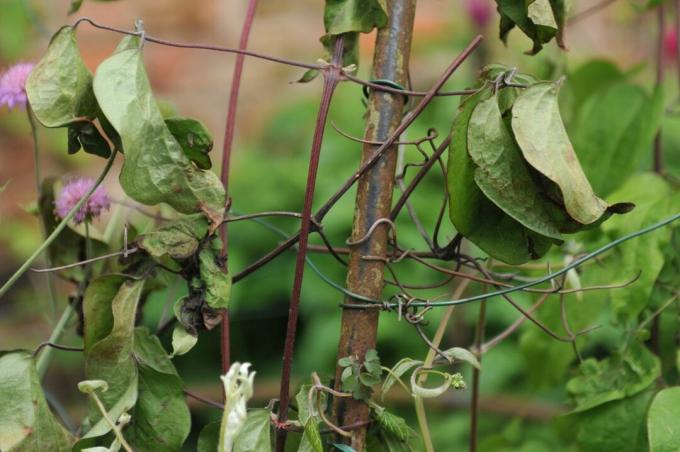
There are about 300 species of the plant genus Clematiswhich depending on variety can delight the owner from spring to autumn in almost all colors in the garden. Some varieties are accompanied by different tart or sweet scents. The winter picture is determined by cascades of silvery, silky tufts of hair and fruits. All of this sounds like a plant that is definitely worth keeping in the garden. Unfortunately, there is currently the Fusarium and the Phoma Clematis wilt, which create this idyll threaten and therefore great caution is required if there are noticeable changes to your own clematis appear.
"Contents"
-
Clematis wilt: recognizing and distinguishing symptoms
- Recognize Fusarium clematis wilt
- Recognize Phoma clematis wilt
-
Clematis wilt: treat successfully
- Treat clematis wilt with fungicide
- Treat clematis wilt naturally
- Clematis wilt: Prevent and prevent infestation
- Clematis wilt: Resistant varieties
Clematis wilt: recognizing and distinguishing symptoms
In the case of clematis wilt, a distinction is made between two different diseases, which are particularly large-flowered Clematis species infested. The mushrooms differ in various symptoms. In the following, we will show you how you can recognize this at an early stage.
Fusarium clematis wilt recognize
The Fusarium clematis wilt breaks through the fungus Coniothyrium clematidis-rectae the end. This penetrates the plant through injuries to the leaves or shoots and clogs its water ducts. These unwanted entry gates can be damaged by mechanical damage during garden maintenance or through stress cracks in the bark due to excessive solar radiation in colder months develop.
Because the fungus prevents the flow of water, the first symptoms appear in the form of suddenly hanging shoots and / or withering leaves. Without knowledge of these symptoms, one would at first probably suspect that the plant is lacking water. If you should now water, this only favors the typically moist habitat in which mushrooms feel particularly comfortable. The trick is to recognize that these symptoms are not normal water deficiency symptoms, but rather serious signs of clematis wilt. The Fusarium clematis wilt is also characterized by the fact that no spots appear on the leaves and the shoots begin to wither "for no reason".
A point in time to keep an eye out for such impairments is from June, as high temperatures are possible there and only then can the fungus multiply quickly.
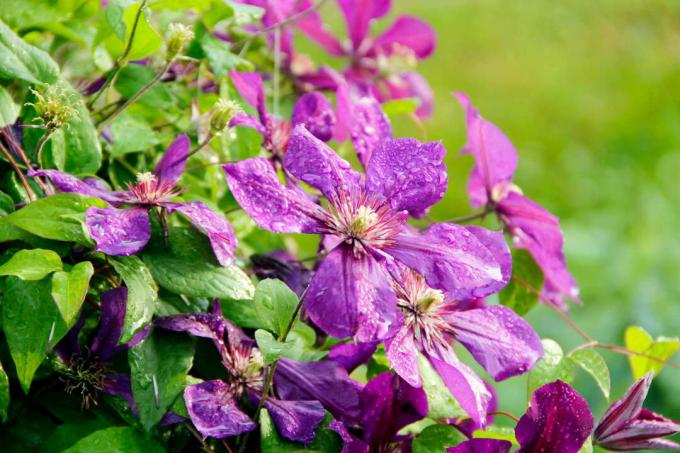
Phoma clematis wilt recognize
The other and more common form of the disease is called Phoma clematis wilt and is caused by the fungal pathogen Ascochyta clematidina. This form of clematis wilt is much easier to recognize because spots form on the leaves in the lower part of the plant. These are initially yellow to light brown, but over time they get darker and eventually take up the entire leaf. This infestation begins on the underside of the leaves, but increases quickly, so that after a few days other parts of the plant can be affected. After two weeks, the first shoots usually die off, unless the first symptoms have been correctly interpreted.
Large-flowered clematis hybrids are particularly at risk, as the aboveground parts of the plant can die off completely.
In terms of time, you should be prepared for the Phoma clematis wilt from early summer (i.e. from the month of May) and always keep an eye out for impairments to your own clematis plants.
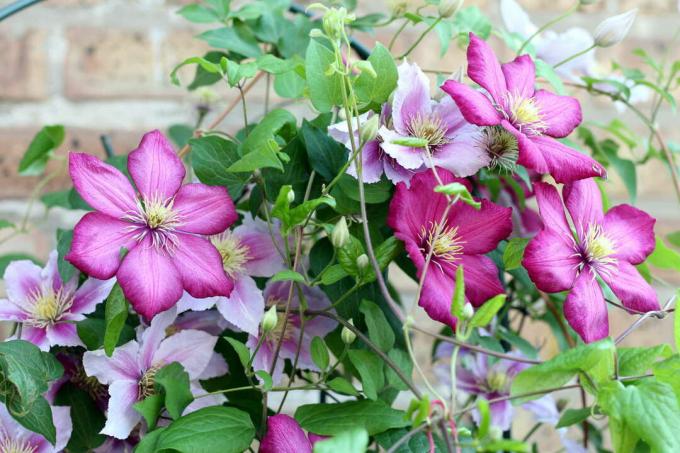
Clematis wilt: treat successfully
Since the course of this wilt disease is very rapid, action should be taken when it is discovered. The methods also differ here, depending on whether it is the Phoma or the Fusarium variant.
Clematis wilt with fungicide treat
To begin with, it should be said that the use of pesticides must strictly follow the package insert and only if the diagnosis is positive. If used excessively, not only can the surrounding plants suffer, but also pollinating insects and soil organisms. Therefore, the same principle applies here as with fertilization: A lot does not help much. If you are unsure, you should always rely on the advice of the knowledgeable pesticide seller.
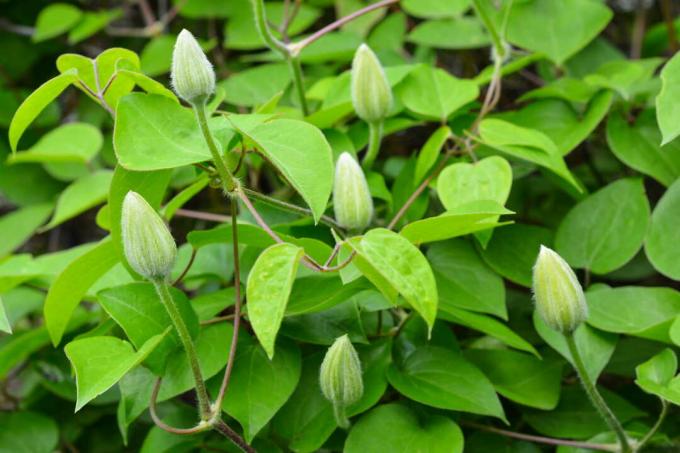
The clematis wilt cannot always be counteracted with a commercially available fungicide. If it is found that it is the Fusarium clematis wilt, you can save yourself the money, as fungicides have no effect on this.
In the case of Phoma wilt, the early use of a suitable fungicide can damage and destroy the fungal pathogen. If the infection has already reached deeper parts of the plant, it can mean that the disease persists despite treatment. We recommend agents that are not dangerous to bees and that work systemically, which means that the agent is absorbed by the plant via the roots or the leaves and thus spreads throughout the entire organism distributed. The advantage here is that such agents reach every part of the plant and also have a lasting long-term effect against clematis wilt.
Clematis wilt Naturally treat
The natural treatment for this fungal disease is based on correct cutting into healthy wood. Should you recognize the first symptoms of the clematis wilt, all infected parts of the plant must be cut off immediately and banished from the garden. In the worst case, the plant will fail for the next two years, but can then sprout again. Infected parts of plants should be disposed of with household waste, because the fungal spores can continue to live on fallen leaves and clippings and can quickly infect other plants.
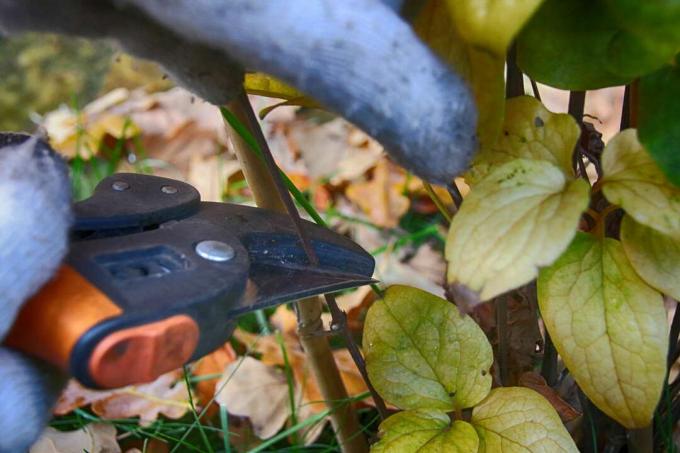
Clematis wilt: Prevent and prevent infestation
As the vernacular knows, a fungus is a sign of moisture and wetness. It is similar with a fungal disease. If the plant is constantly moist, fungi can form on both above-ground and underground parts of the plant.
To counteract this, your clematis species should be given a location that is similar to that of the roses. These prefer a sunny location that is well ventilated so that the moisture from the precipitation quickly disappears from the leaves. This also prevents potential habitats for fungi. A little tip: That is the reason why the leaves of a plant should not be watered from above, but rather directly at the roots or the soil. In addition to moisture, injuries are also excellent entrance doors for diseases of all kinds. Such mechanical injuries can be caused by blunt cutting tools or by caring for the surroundings. For example, one should refrain from constantly loosening or digging up the root area. Soil loosening would only make sense if the clematis was planted in heavy, dense soil and there is a risk of waterlogging. If there is humus-sandy soil, repeated digging should not be carried out, otherwise parts of the roots will be found which are weakened at this moment and particularly vulnerable to the next time Are pathogens.
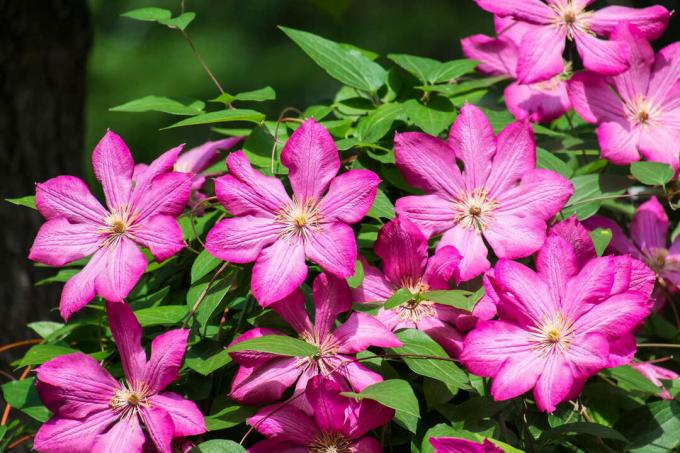
Maintenance measures can be limited to the superficial gathering of weeds and the piling of bark mulch. Bark mulch suppresses the weeds and stores the moisture. A tried and tested method is also to shade the roots so that there are no stress cracks. You can do this with a shading net, for example. Tip: If too many empty pots have accumulated over time, these can also be divided and used to shade the roots.
The most important and at the same time easiest point to avoid clematis wilt is, cutting tool, that has come into contact with already diseased plants, immediately to alcohol disinfect. Otherwise the pathogen will be spread effectively and quickly in all ways nearby.
Clematis wilt: Resistant varieties
Plant protection begins with the selection of the plant, which is why we have given you an overview of suitable species and varieties within the plant genus below Clematis compiled. The recommendation of this list is based on the resistance to both the Phoma wilt and the Fusarium wilt. Unfortunately, a disease cannot be completely ruled out within the hybrid varieties.

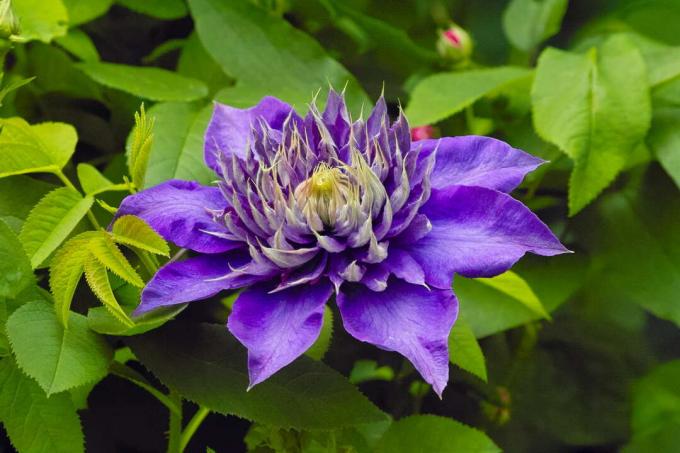
tip: To strengthen your clematis and make it more resilient, we recommend ours Plantura organic flower fertilizer. This is perfectly adapted to the needs of the clematis and offers a high proportion of potassium and phosphate, which is important for the flowering phase. The organic fertilizer consists primarily of organic components.



